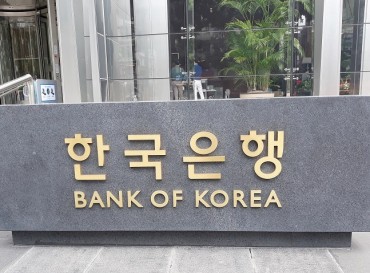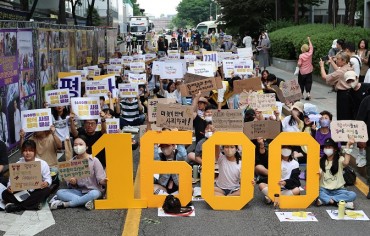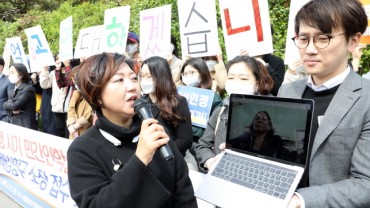
The United Nations Command (UNC) holds an opening ceremony of a new barracks for U.S. officers in Camp Bonifas, the UNC Security Battalion located just south of the Demilitarized Zone, on Jan. 26, 2024, in this photo captured from the UNC’s Facebook posting. (Image courtesy of Yonhap)
SEOUL, Jan. 30 (Korea Bizwire) — A new front-line barracks of the United Nations Command (UNC) Security Battalion has been named after two U.S. Army officers who were killed in a 1976 axe incident as a tribute their sacrifices, the command said Tuesday.
Major Arthur Bonifas and First Lieutenant Mark Barrett were killed by North Korean soldiers on August 18, 1976, in the Joint Security Area (JSA) in the Demilitarized Zone (DMZ) while trimming a poplar tree to secure a clear view.
The “Bonifas & Barrett Barracks” for U.S. officers in Camp Bonifas, the base for the UNC Security Battalion just south of the DMZ, opened during a ceremony Friday. A memorial sent by President Yoon Suk Yeol was also unveiled during the ceremony.
“In eternal memory of JSA Company Commander Major Bonifas and Platoon Leader Lieutenant Barrett who were killed by members of the KPA during a mission on Aug. 18, 1976, the ROK Government recognizes the newly built US officer barracks the ‘Bonifas & Barrett Barracks,’” the memorial inscribed with Yoon’s handwritten signature showed.
The ceremony was attended by Maj. Gen. John Weidner, the UNC chief of staff, as well as South Korean military officials and members of the Neutral Nations Supervisory Commission, which oversees the 1950-53 Korean War armistice.
The axe murder is the most brutal incident that took place in the DMZ, nearly pushing the two Koreas to the verge of war.
Three days after the attack, South Korean troops carried out Operation Paul Bunyan to cut down the tree under a heightened DEFCON alert system. Within hours, Kim Il-sung, North Korea’s late founder, expressed regret over the deaths of the U.S. officers.
Following the incident, the military demarcation line was drawn through the JSA to ban both sides from crossing the line.
(Yonhap)






